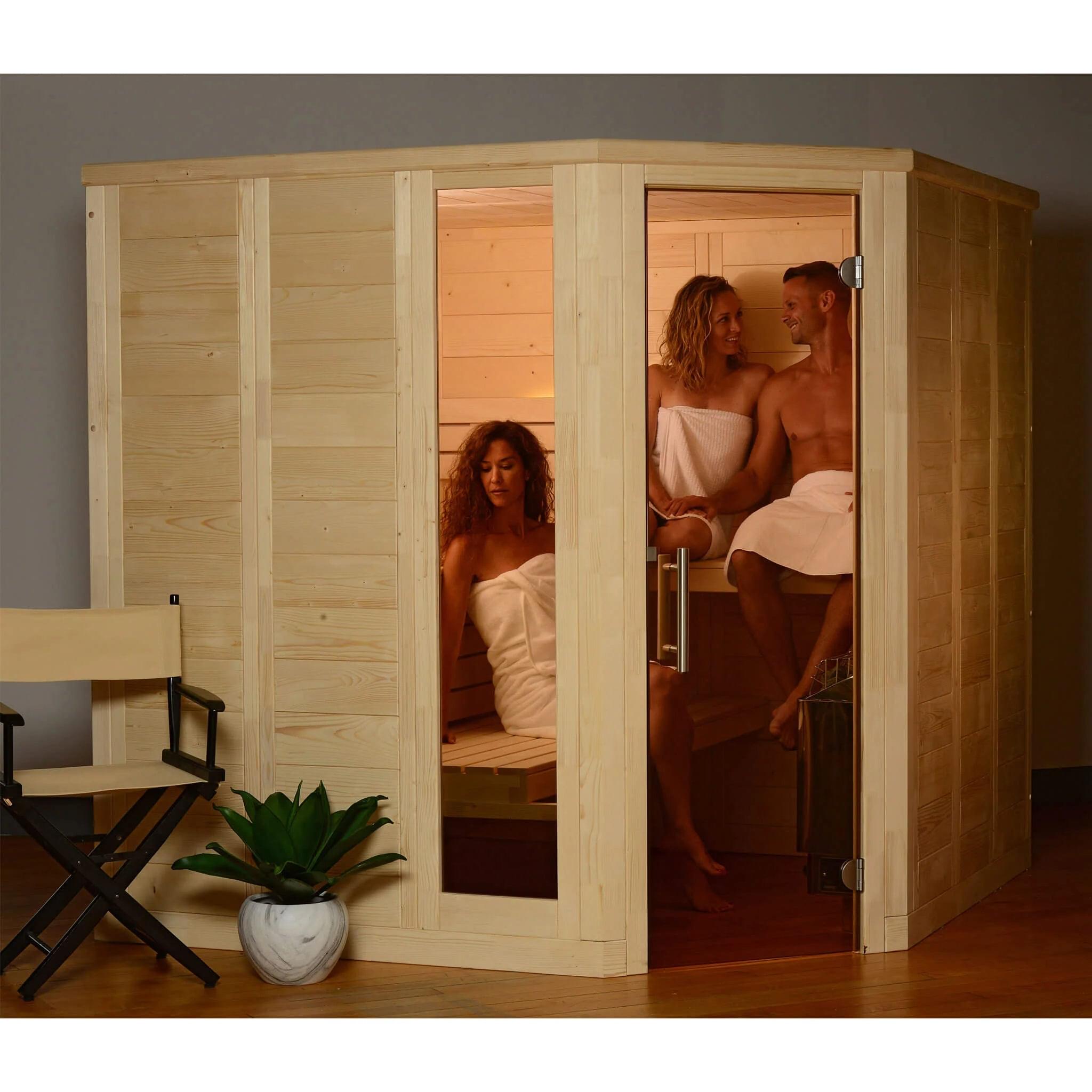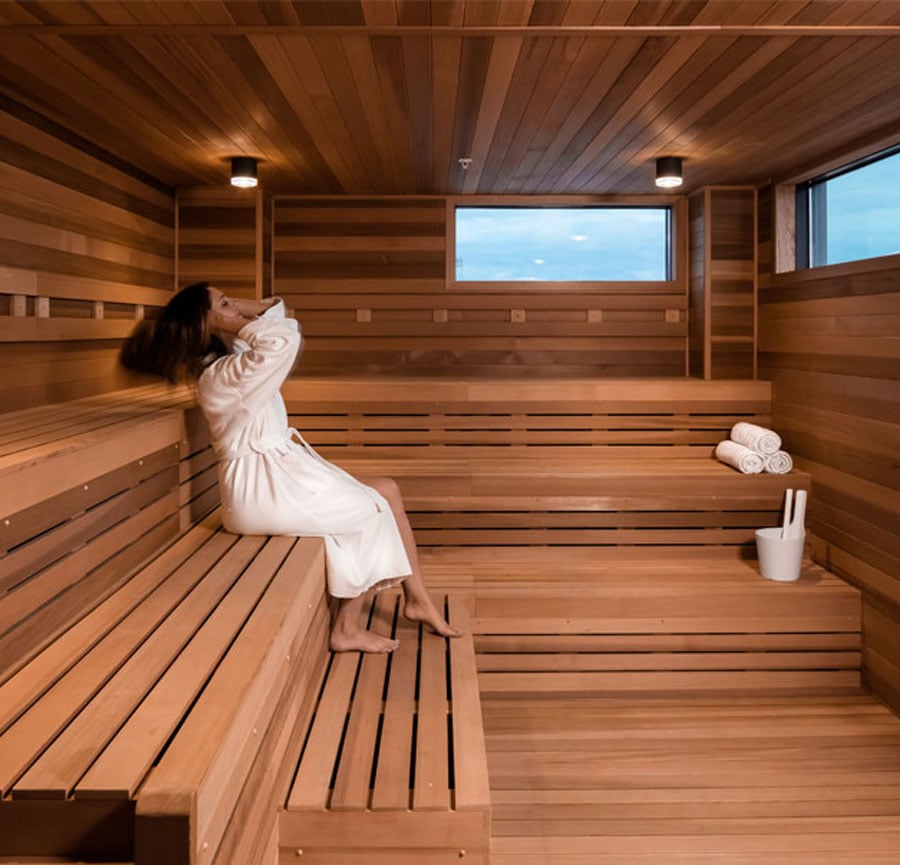Rumored Buzz on Traditional Sauna
Rumored Buzz on Traditional Sauna
Blog Article
What Does Traditional Sauna Do?
Table of ContentsWhat Does Traditional Sauna Do?The Single Strategy To Use For Traditional SaunaThe Best Guide To Traditional SaunaUnknown Facts About Traditional Sauna
A lot of the weight lost in a sauna is water loss and is re-gained upon rehydrating. Nonetheless, undoubtedly sauna can be an integral part of a healthy and balanced weight management program. To take a look at the differences in between typical and IR saunas, I will certainly separate these into proven, academic, and fabricated differences.Hence, the best factor in the saunawhich goes to the ceiling directly above the sauna heateris typically in between 185 and 190 F. Traditional Sauna. Claims that a typical sauna goes beyond 200 F is just not true and not relevant for electrical saunas offered in the US. The temperature level for a far-infrared sauna is usually set in between 120 and 140 F; nevertheless, unlike the traditional sauna, the objective in and IR space is not to achieve a high temperature level
As a result of this, the temperature distinction is practically irrelevant, given that excessive sweating results in both sauna kinds, but the approach of heating the body is various. In an IR sauna the bather will really feel hot and will certainly sweat profusely, yet at much lower temperature levels. Thus, if the objective is to spend longer time periods in the sauna, the IR sauna is a good option.

How Traditional Sauna can Save You Time, Stress, and Money.
When the heat is attained, the components cycle on and off to preserve the high temperature level. The majority of conventional sauna individuals enjoy putting water over the rocks to produce heavy steam to increase sauna moisture degrees. The advantages of putting water over the rocks consist of: making the area a lot more comfy, moistening the nasal flows, and allowing the usage of aromatherapy by blending necessary oils with the water.
In a far-infrared sauna, the warm waves pass through the body to effectively heat up the body and raise the body core temperature level. To accomplish this increased temperature level, Far-infrared emitters produce infrared energy which is close to the same wavelength as that which the body naturally emitsoften described as the "Vital Variety" of 7 to 14 microns), so the energy is well gotten by the body.
When the power enters the body, it triggers the body temperature level to enhance and eventually causes sweating. In an infrared sauna it is necessary for the emitters/heaters to stay on practically continuously. Considering that there is no mass of rocks more information to retain warm, the sauna will cool if the emitters turned off.
As discussed above, the sauna bather in an infrared area wishes to position himself before operating emitters to obtain maximum take advantage of the heat. The heating time for both areas can be extremely different, relying on just how the rooms are used. For a traditional sauna, a bather needs to enable 30-40 minutes for the room to accomplish a preferred temperature level and to effectively pre-heat the rocks.
The 9-Second Trick For Traditional Sauna
A well created sauna will normally achieve a temperature level of 150-160 F in about 30-40 minutes. For hotter temperature levels, the room may require to warmth for a longer period.
To some, 15 minutes was "wasted" while the infrared energy heated up the timber panels as opposed to warming a body, while others discover a pre-heated area to be a lot more comfortable and believe a raised beginning temperature is essential to begin sweating. The length of click for source advised use for every space is approximately the same (10-15 minutes per session); nonetheless, as a result of the reduced air temperature levels and the capacity to really feel the impacts of infrared warm quicker than a typical sauna, it is not unusual for an individual to spend an overall of 20-30 minutes in an infrared sauna.
Conventional saunas have a tendency to be bigger (for this reason utilize more power) than infrared saunas, although typical saunas are definitely offered in one and 2 individual dimensions. For a two-person traditional sauna, 5x6 or 5x7 dimension is most preferred. The leading bench can pleasantly seat 2 or 3 individuals and is additionally long sufficient to relax throughout the sauna session.


The typical cost per kWH of power in the united state is around $0.11, so a 4.5 kW heater will certainly cost around $.50 to compete one hour, if the heating system runs continuously for one hour. Generally a sauna heating system will compete 75% of the first hour and 50% of succeeding hours on since the aspects cycle once the established temperature is accomplished.
Excitement About Traditional Sauna
A 2 individual far-infrared room is typically physically smaller than a traditional sauna, typically regarding 4' x 4' or official site smaller sized. The IR heating unit is commonly 1.5-1.7 kW using a 120 volt 15 amp plug-in service. Since the room can be utilized quicker than a sauna area, we will certainly think the area is made use of for to of an hour consisting of warm up time.
There is a rarely gone over distinction in the social experience in between the two areas. While our society has shed several of the social advantage of the typical sauna experience, it can be really socially fulfilling. From family members time in the sauna, to heart-felt discussions with considerable others, to sauna partiesthe traditional sauna experience can result in intimate interacting socially.
Most higher end infrared areas include tinted light treatment, noise systems and full-glass fronts.
Report this page